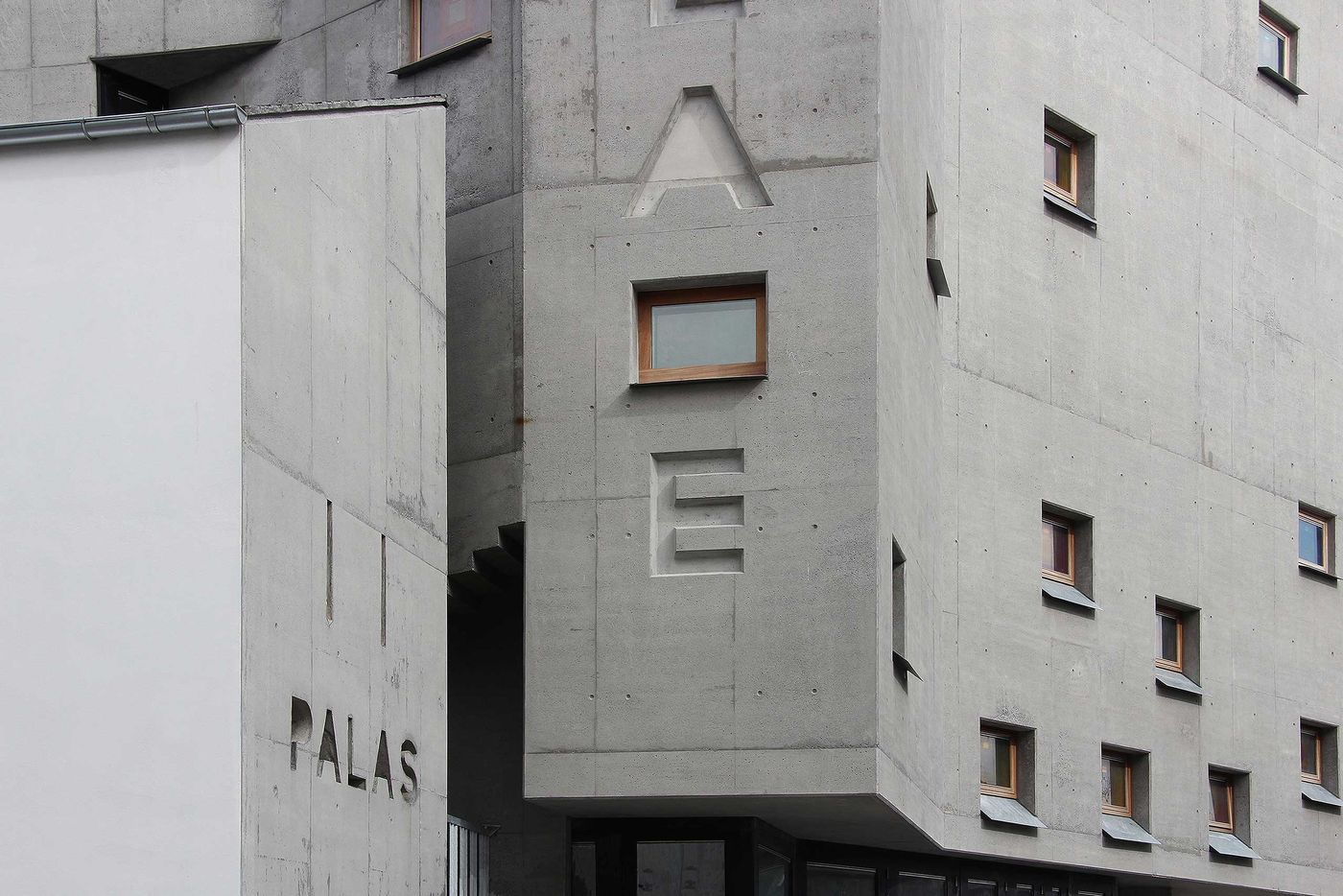
Galway's Picture Palace Fuses the City's Film History with its Present
Words by Sara Panagiotopoulou
Location
Galway, Ireland
Galway's Picture Palace Fuses the City's Film History with its Present
Words by Sara Panagiotopoulou
Galway, Ireland
Galway, Ireland
Location
The contemporary art house cinema, the Picture Palace, in the Irish harbor city of Galway rises above the low skyline like a giant, concrete monolith. Developed by Solas Galway Picture Palace Teoranta, with the financial assistance of Galway City Council, the Department of Arts, Heritage and the Gaeltacht, Bord Scannan na hEireann / The Irish Film Board, the Arts Council and the Western Development Commission, when completed - the project is currently 80% finished -it will be the first state-of-the-art, art house cinema of its kind in western Ireland.
Historically, Galway has one hundred year old ties to moviemaking; UNESCO's City of Film, it's no surprise that history is also a part of this building's construction. The plot of land that the concrete building is situated on dates back to 1806 and originally belonged to a Georgian merchant, with previous incarnations as a toy store, livery stables, a grain depot and a private house. In fact, the original three storey structure is still very much present and has painstakingly been reconstructed to match the stylistic character of the original to now function as a "gatehouse" to the modern, concrete monolith that houses the main cinemas behind it.
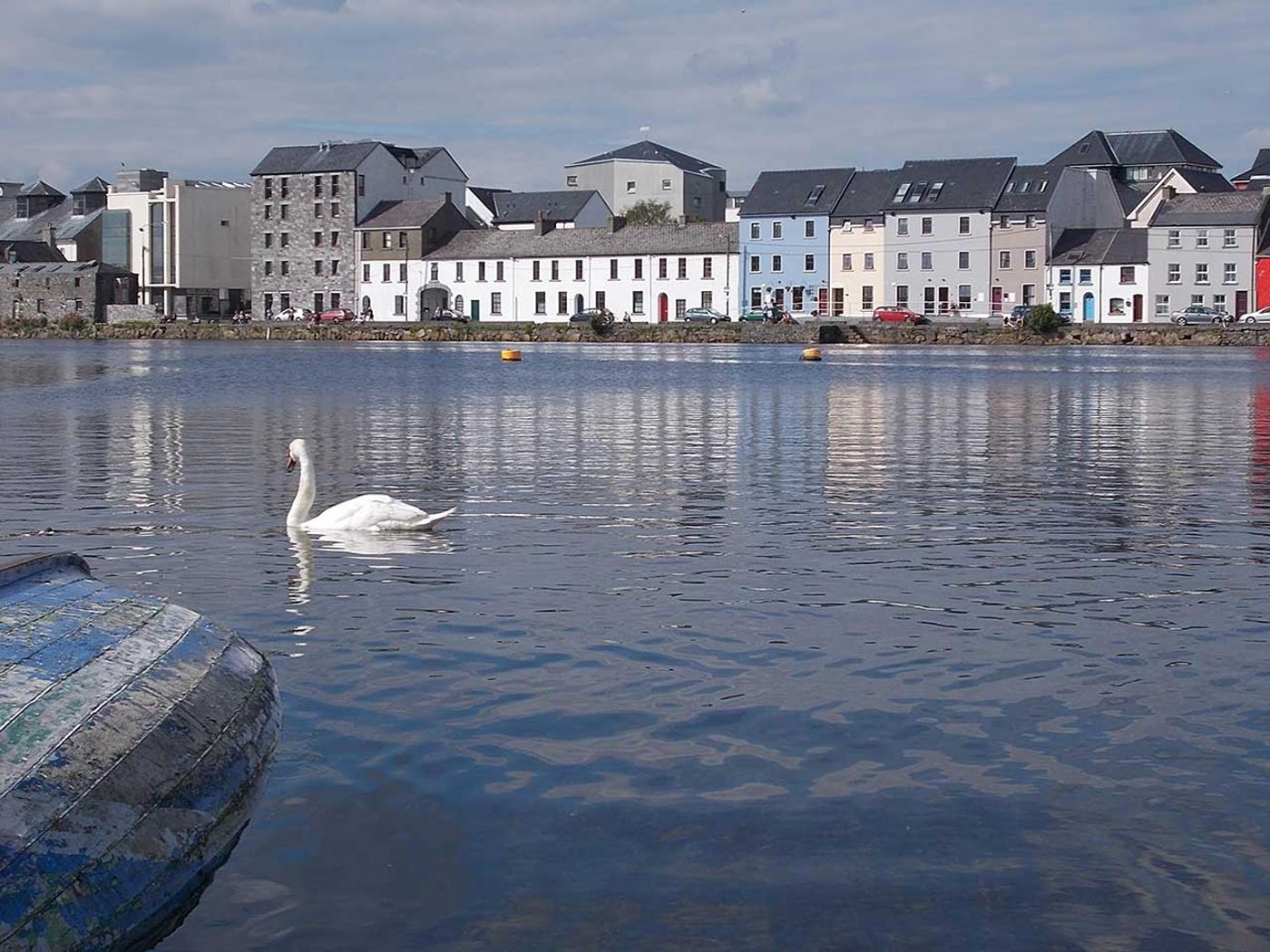
Photo by Tracy Geraghty.
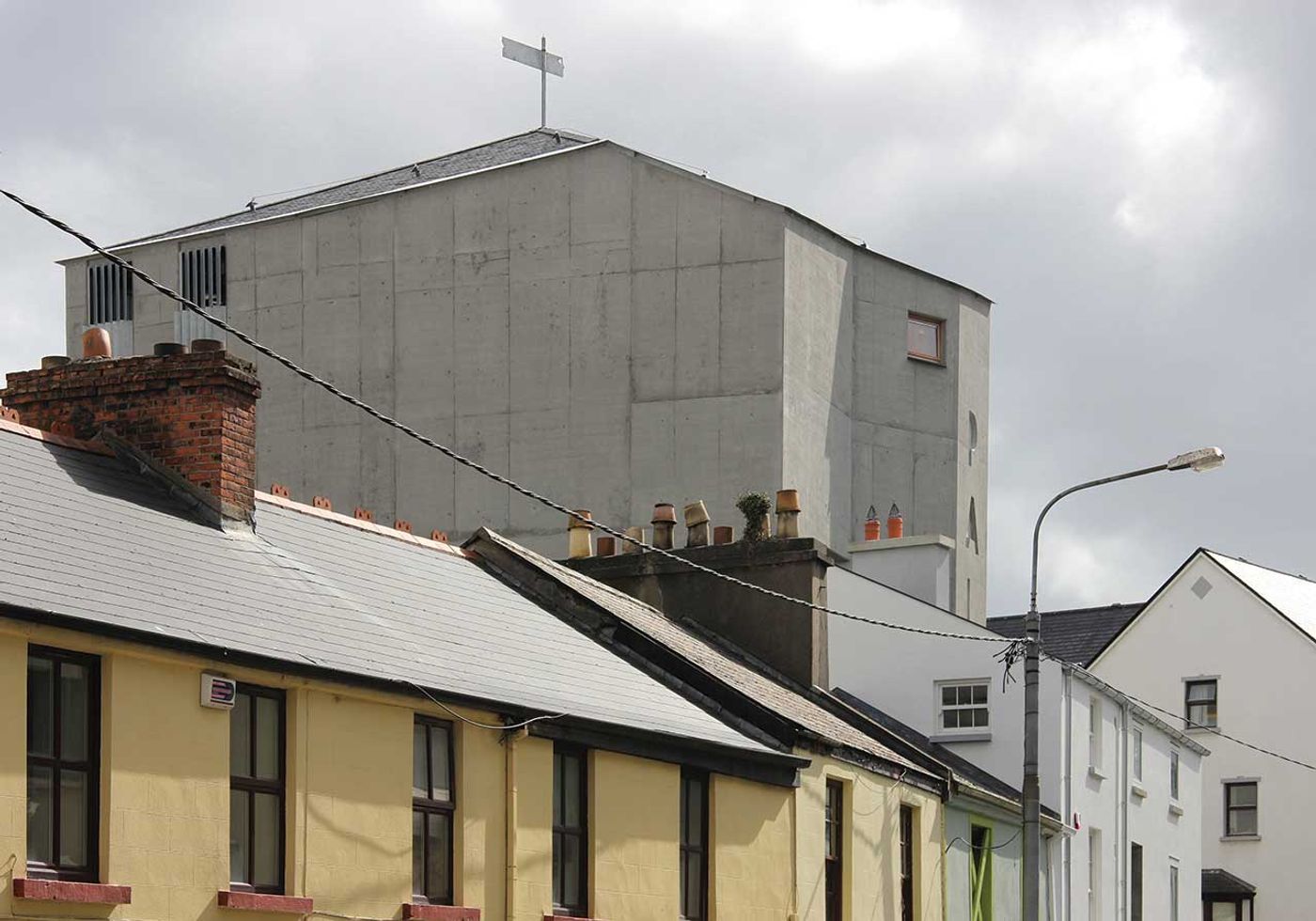
Photo by Peter Maybury.
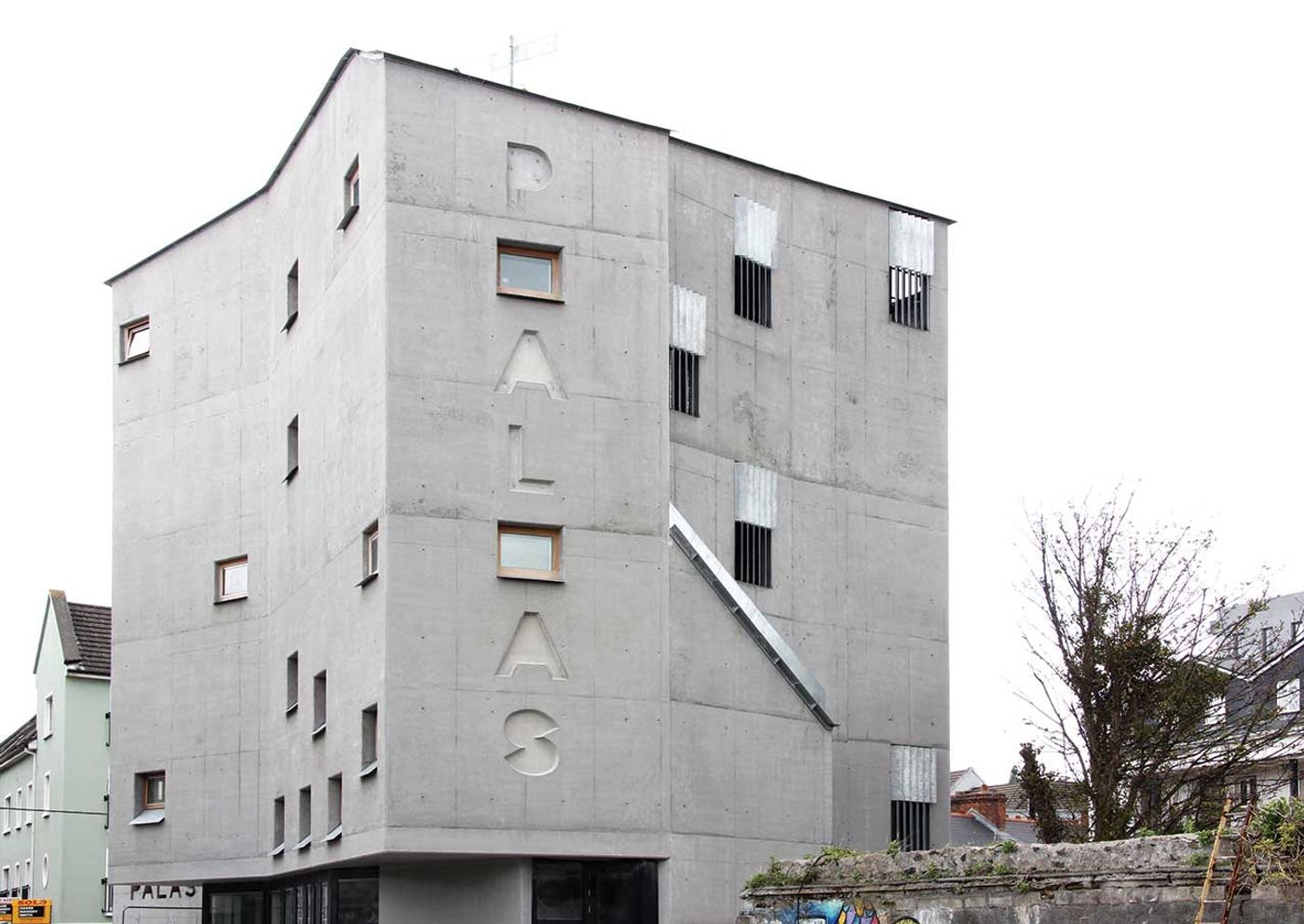
Photo by Peter Maybury.
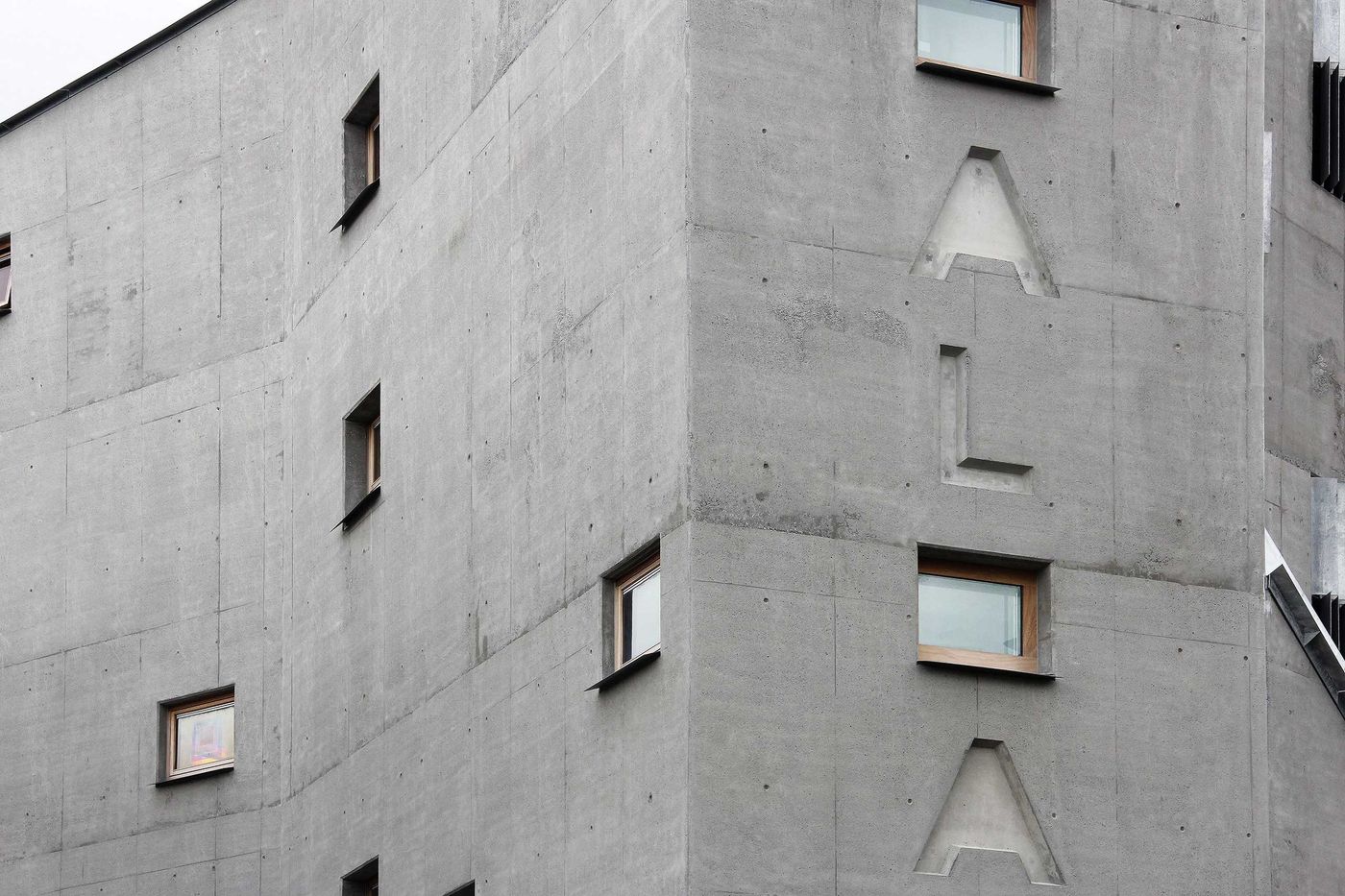
Photo by Peter Maybury.
Designed by Tom de Paor of de Paor Architects, both the contemporary historical structures tie in to each other, juxtaposing their stylistic differences with touches of similarities, such as the polished concrete used throughout, as well as the buildings' slate pyramid and pitch gabled roofs, respectively. The cinemas themselves cantilever on the contemporary structure, creating both a sense of movement as well as providing more space to the interior facilities.
Inside, the public rooms provide a wide range of offerings for patrons to enjoy, each decorated in its own idiosyncratic fashion. The tea room is therefore sheathed in glass, offering ample daylight to flood in; the bar is paneled in hardwood, creating a cozy atmosphere; and the cinemas are draped in a moody, red fabric that conceals behind it each room's technically state-of-the-art, acoustic insulation.
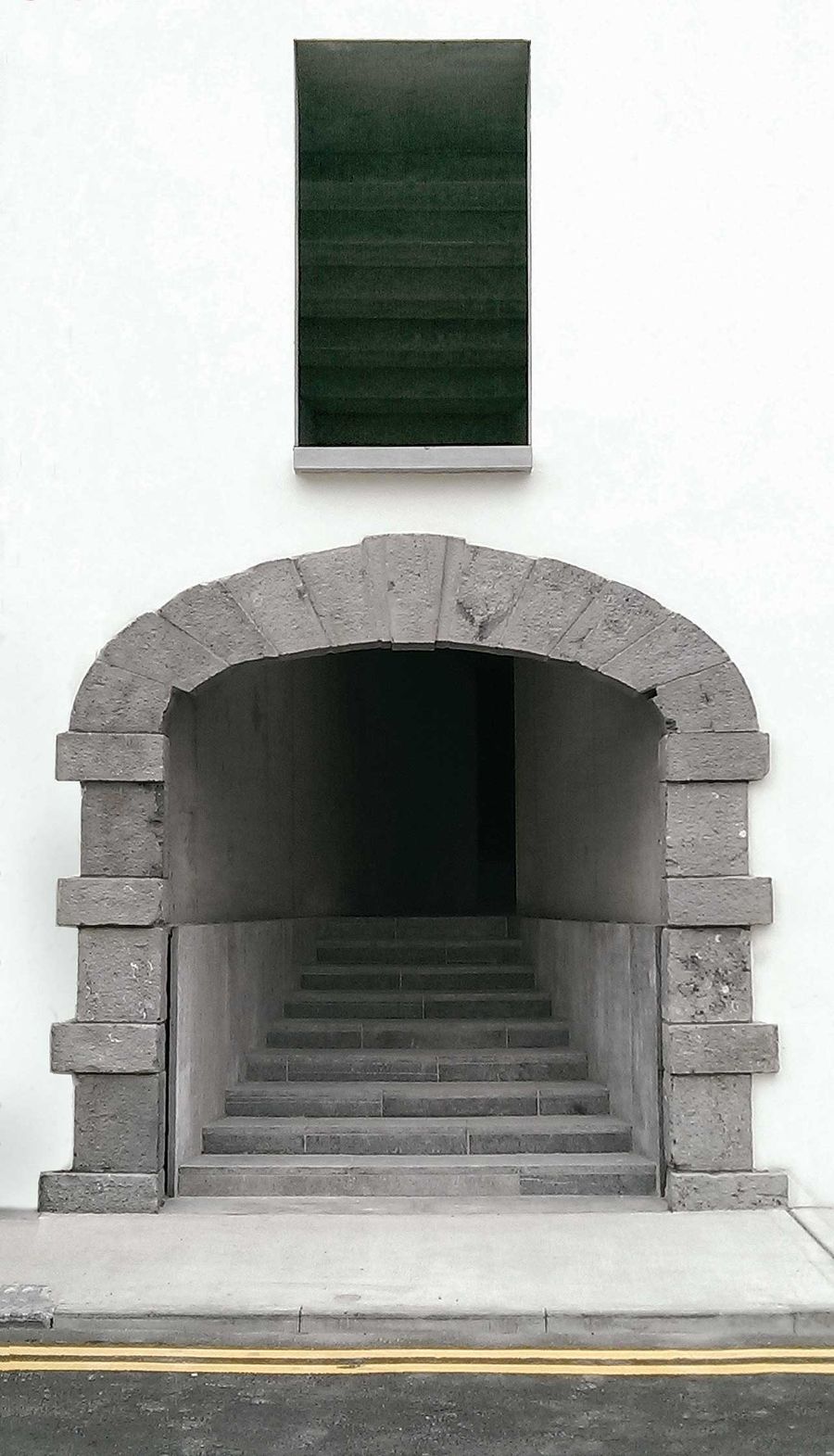
Photo by Anna Hofheinz.
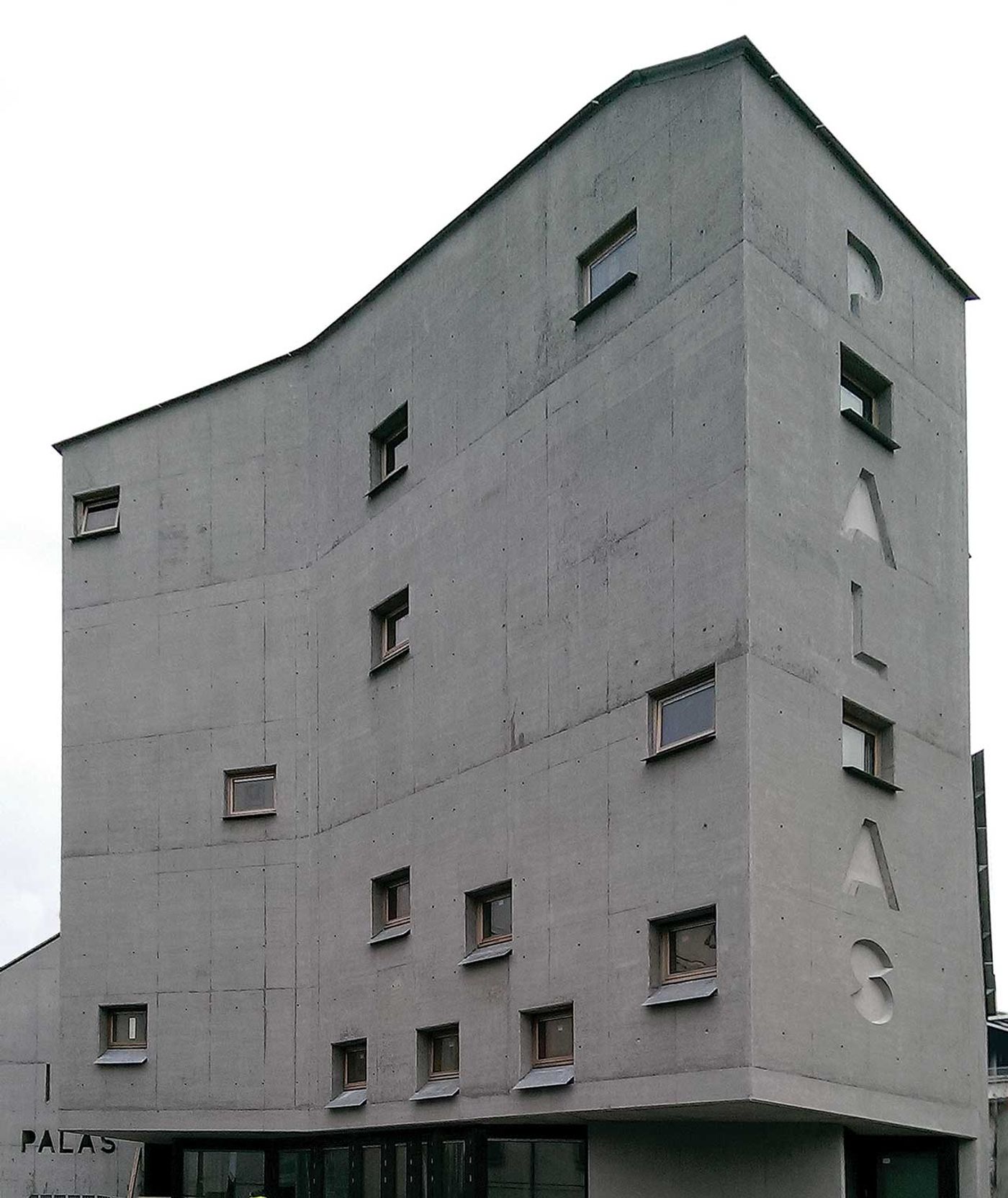
Photo by Anna Hofheinz.
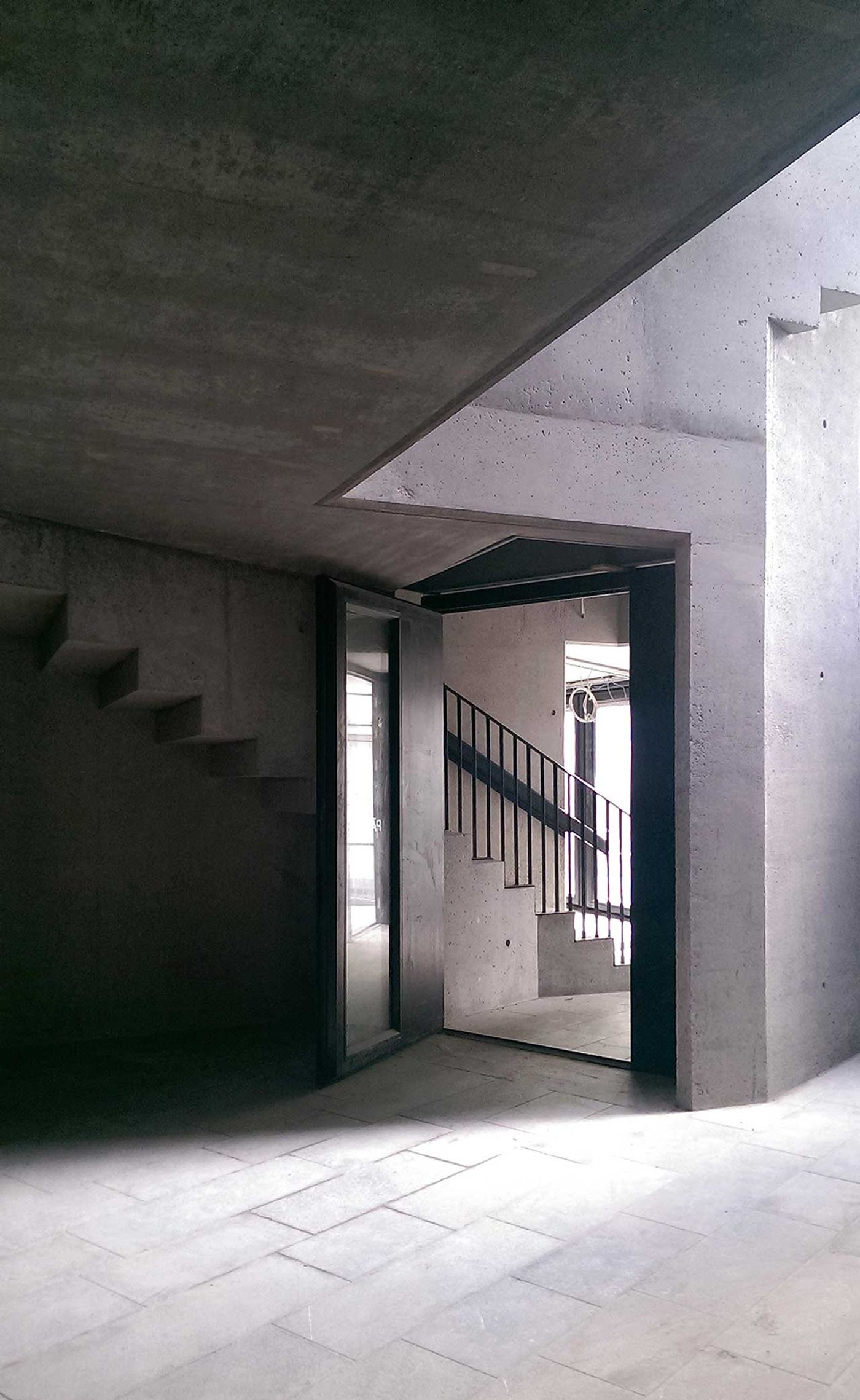
Photo by Anna Hofheinz.
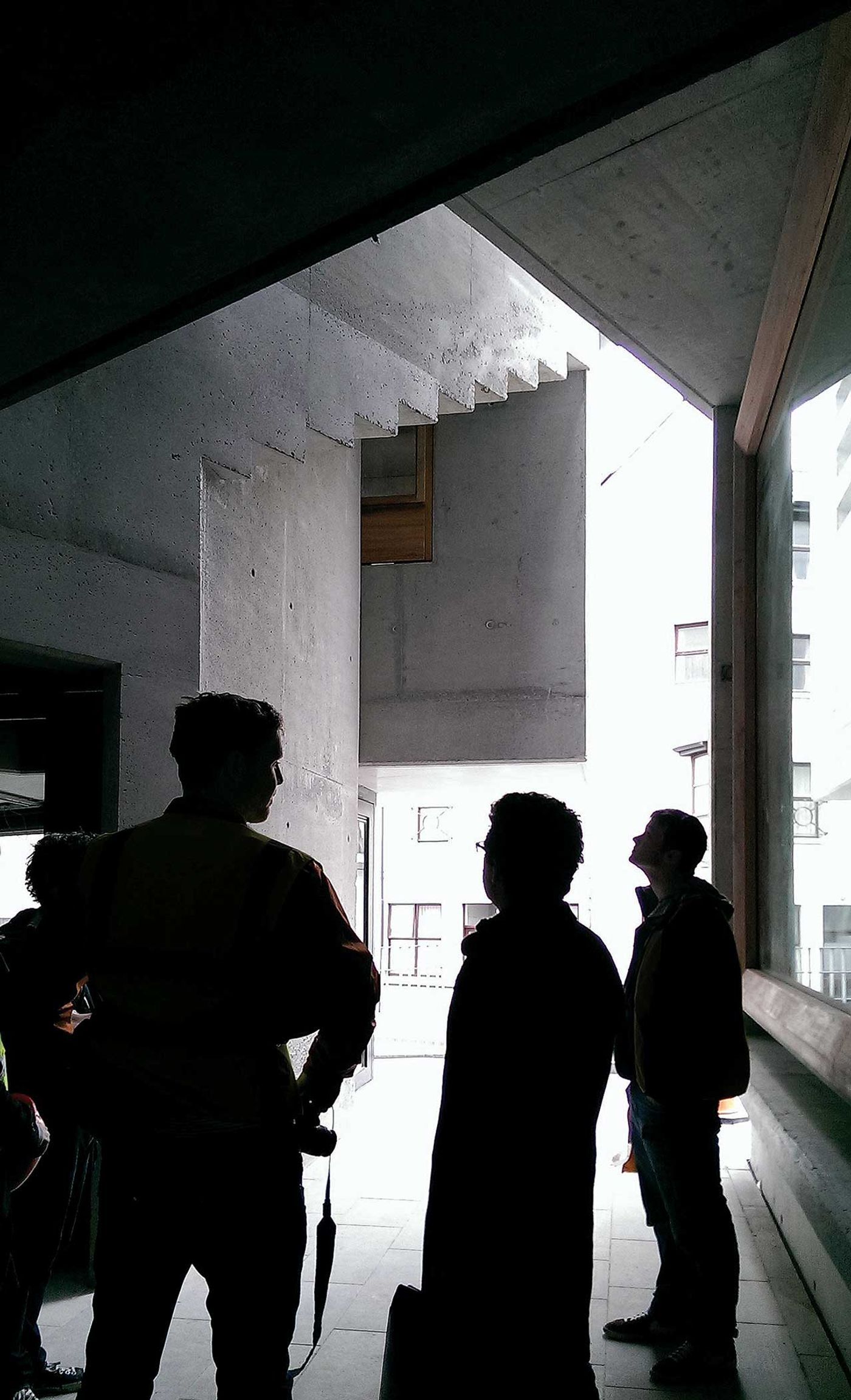
Photo by Anna Hofheinz.
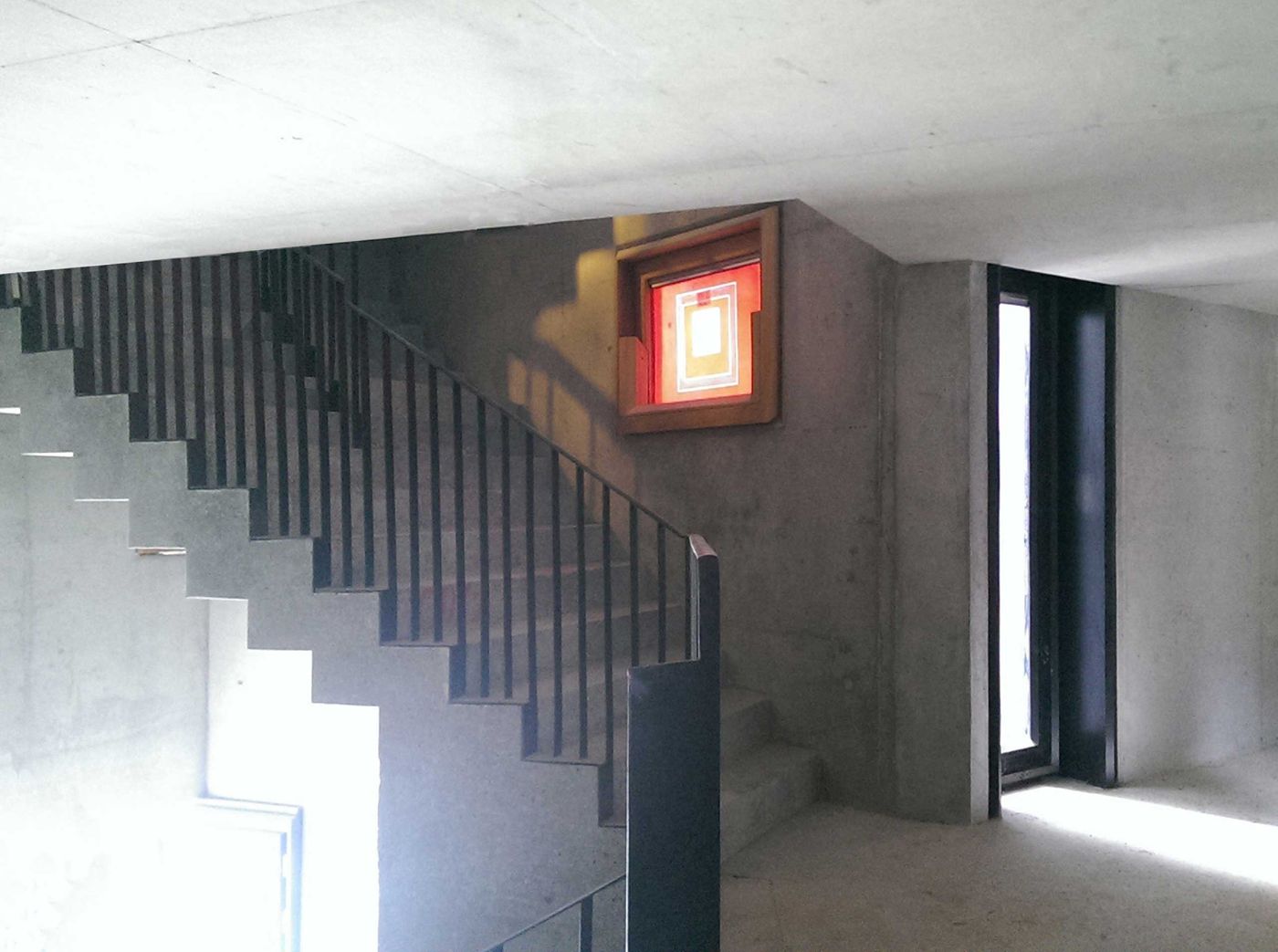
Photo by Anna Hofheinz.
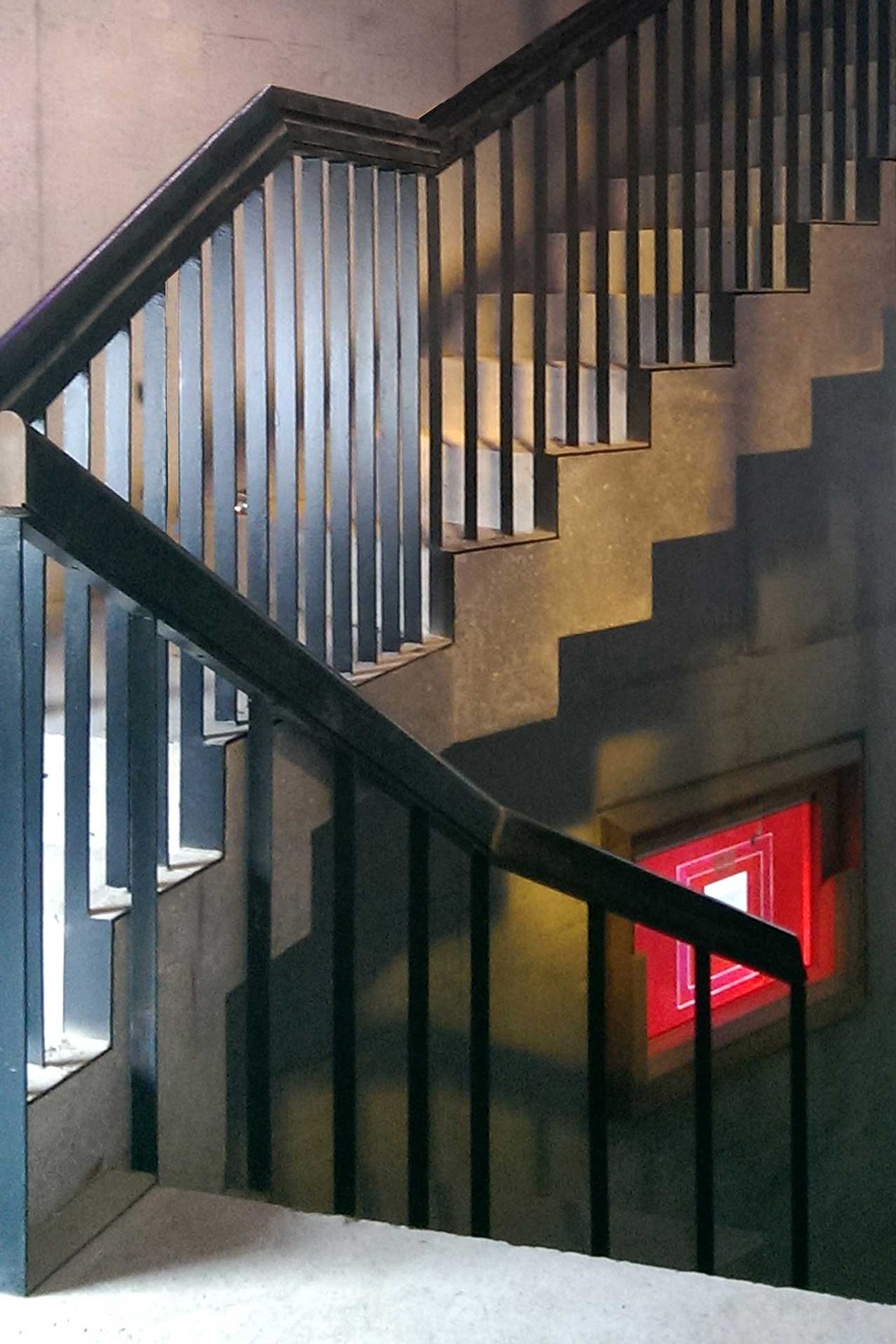
Photo by Anna Hofheinz.
But perhaps one of the most memorable decor touches are the windows that mark the walls of the contemporary structure facing the street (specifically, punctuating the staircases and the bar). Each windows' resin-painted, double glazed glass was created by the late, great Irish artist, Patrick Scott, who donated this work - his last in fact - to the Picture Palace. Concentric, geometric designs of circles within squares and squares within squares are done up in various color "suites," such as shades of greens and blues; red, orange and amber; or pink, purple and yellow.
These all cast a dramatic light when viewed from within the structure, when the natural light streams through them by day, as well from the outside the structure, when the interior's light streams through them by night, proving in their own way how the city of Galway has impacted the creation of the Picture Palace, and by consequence, how the Picture Palace - upon its completion - will be impacting the city.
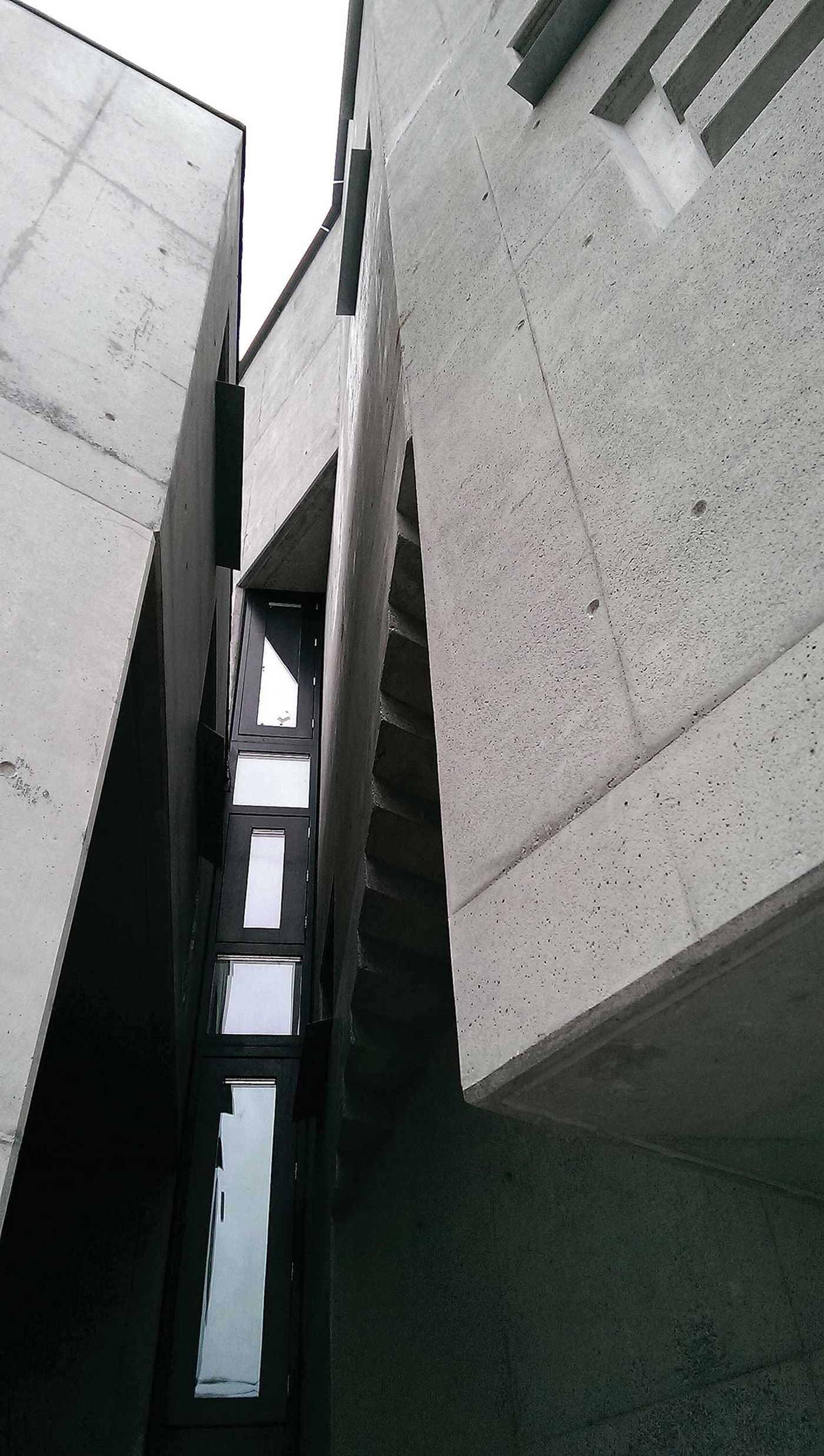
Photo by Anna Hofheinz.
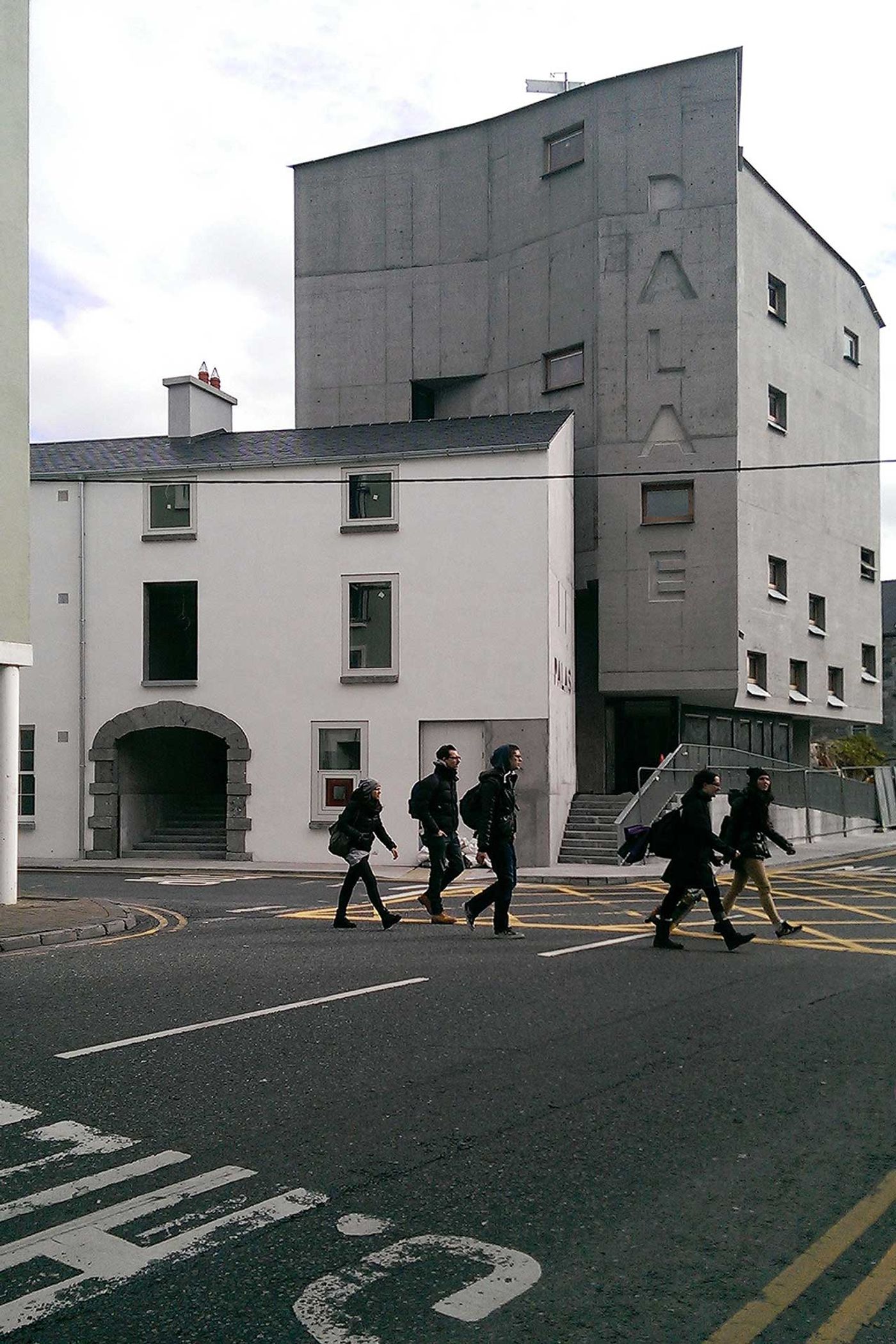
Photo by Anna Hofheinz.